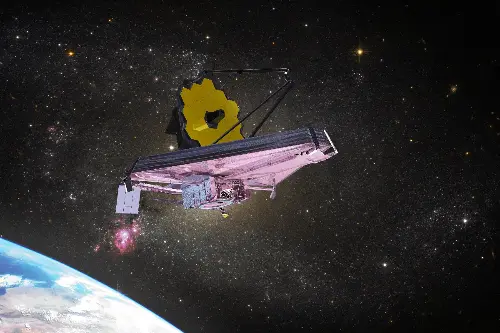
A new discovery using the James Webb Telescope has implied we may live in a black hole.
The telescope, launched by NASA three years ago, gives us the ability to take photographs of deep space with unprecedented resolution.
Now new images have shown that around two-thirds of 263 galaxies imaged by Webb rotate in the opposite direction to our Milky Way galaxy.
It had been expected that the number of galaxies rotating clockwise and counterclockwise would be roughly the same.
While the reason for this imbalance is presently unclear, one hypothesis that might explain it is that our entire universe lies inside a black hole.
"One explanation is that the universe was born rotating," paper author and computer scientist Lior Shamir of Kansas State University said in a statement.
"That explanation agrees with theories such as black hole cosmology, which postulates that the entire universe is the interior of a black hole.
"But if the universe was indeed born rotating it means that the existing theories about the cosmos are incomplete."
The clockwise bias in the rotation of the galaxies studied is striking, Shamir said.
"The analysis of the galaxies was done by quantitative analysis of their shapes, but the difference is so obvious that any person looking at the image can see it," he added.
"There is no need for special skills or knowledge to see that the numbers are different. With the power of the James Webb Space Telescope, anyone can see it."
Another explanation for the finding could be that galaxies rotating clockwise are overrepresented because of the Doppler shift effect, which makes them brighter.
Should that be the case, researchers would need to "re-calibrate our distance measurements for the deep universe," Shamir said.
"The re-calibration of distance measurements can also explain several other unsolved questions in cosmology such as the differences in the expansion rates of the universe and the large galaxies that according to the existing distance measurements are expected to be older than the universe itself."
The Webb telescope studies every phase in the history of the universe, from the Big Bang to the formation of solar systems, and the evolution of our own solar system, according to NASA.
It orbits the sun, 1.5 million kilometers away from the Earth.
Do you have a tip on a science story that Newsweek should be covering? Do you have a question about space? Let us know via [email protected].
Reference
Shamir, L. (2025). The distribution of galaxy rotation in JWST Advanced Deep Extragalactic Survey. Monthly Notices of the Royal Astronomical Society, 538(1), 76–91. https://doi.org/10.1093/mnras/staf292
